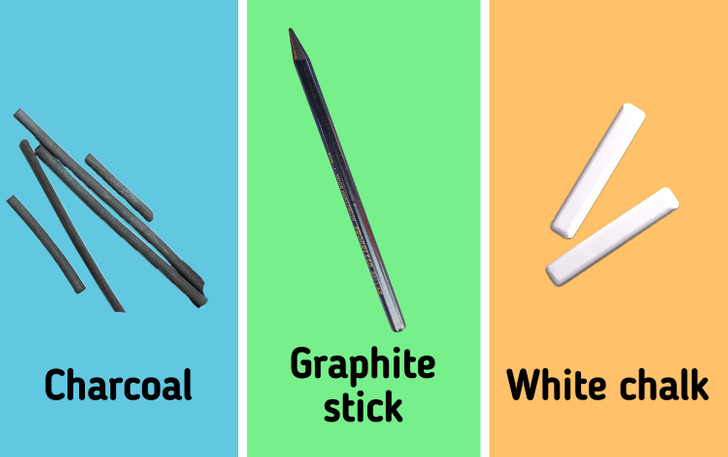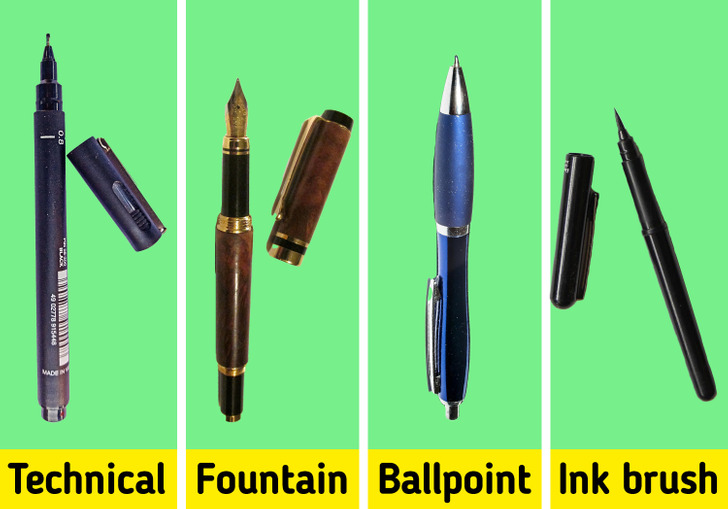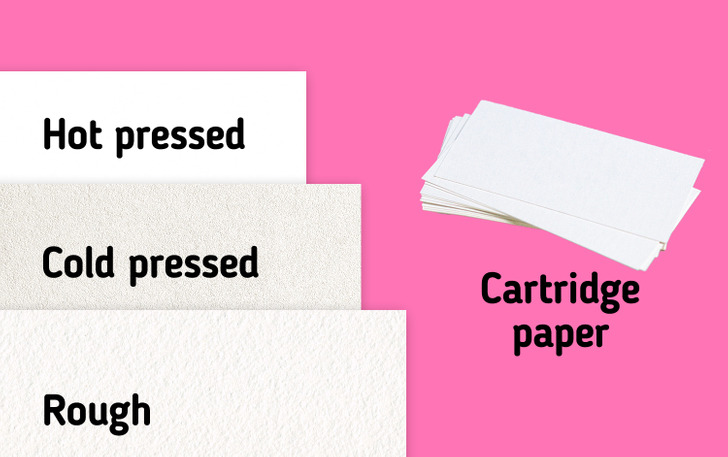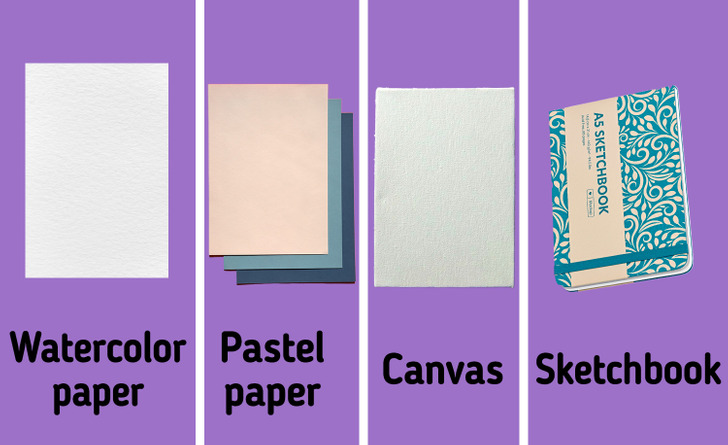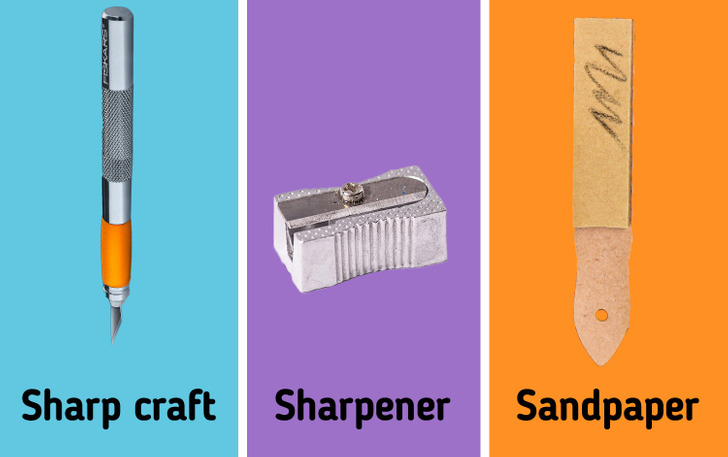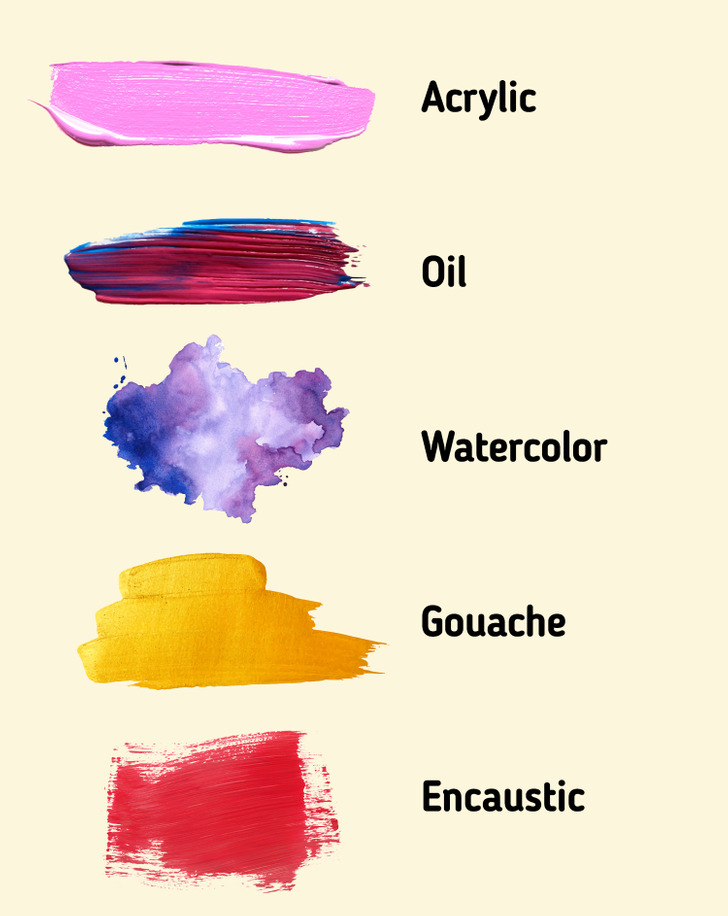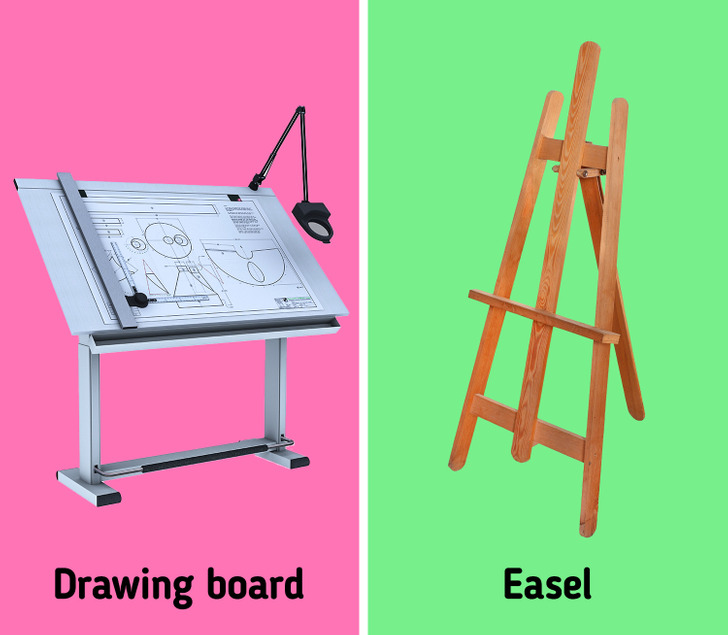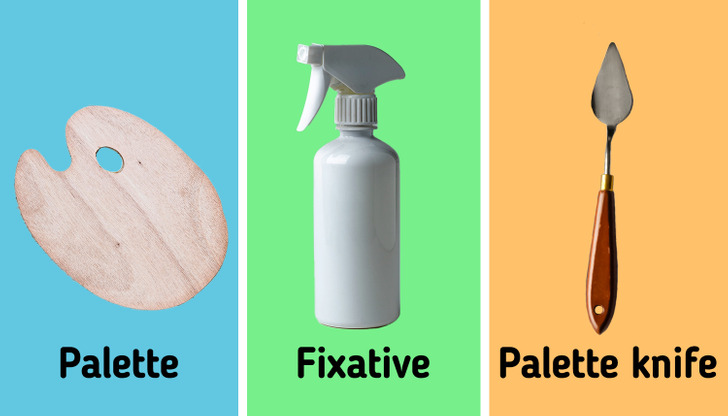8 Art Tools That Will Help You Unleash Your Creativity
For every art beginner, the first steps can be challenging. Creating beautiful paintings and drawings takes time, patience, and practice but having quality materials is also important. It can affect the overall result of your work, help you express your individual creativity, and take your craft to another level.
This is why 5-Minute Crafts prepared a guide of essential tools that every artist needs to know about to make their work easier.
Drawing and painting tools
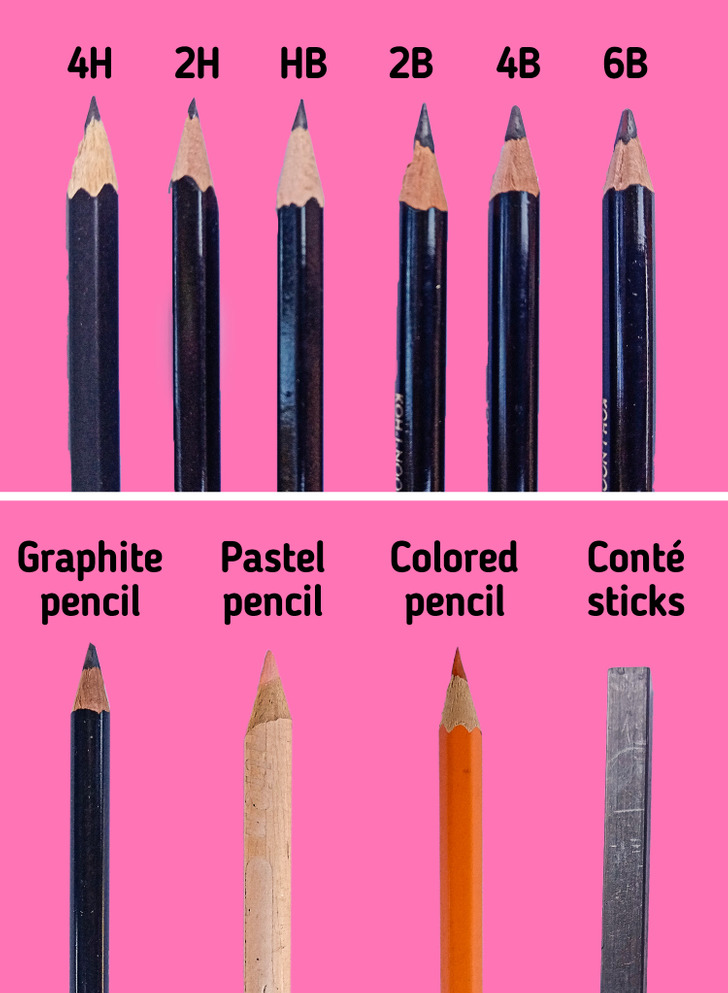
This section includes a variety of pens, pencils, sticks, brushes, etc. They can be made from various materials, and their use is different. Here we can find:
- Graphite pencils — graphite is made from baked carbon that is mixed with clay. The pencils are graded from hardest (H) to softest (B) with fine (F) and HB that is in the middle range. Hard tip pencils are for lighter lines, while softer pencils are for more tonal work.
- Pastel pencils — these are great for more detailed drawing and shading, as they blend well. Pastel pencils are comfortable to work with and have a different range of colors to choose from. Since the trace they leave isn’t long-lasting, a fixative (learn more about the fixative below) needs to be applied to it.
- Colored pencils — these are similar to graphite pencils and come in various softness and quality. Some types can create sharp and definitive lines, while others are used more for blending. They are great for experimenting with layering and shading and don’t require a fixative.
- Conté sticks (carré sticks) — along with crayons and pencils, they are a compound of natural pigments and gum Arabic. Conté sticks are great for colored sketching and blending but cannot be easily erased. Pencils are better for fine line work, while the sticks are great for covering larger areas.
- Charcoal sticks and pencils — the sticks are produced from carbonized wood and can be thin, medium, thick, or extra thick. Depending on their size, they can either be used for finer details (sticks) or for shading the broader areas (blocks, thick sticks). The pencils are cleaner for use and they can make sharper lines that are not easy to blend.
- Graphite sticks — are similar to traditional pencils, but don’t possess a wooden cover. Since the whole graphite tip is exposed, it is possible to make both thin lines and flat tones on bigger sections.
- White chalk — great for making finer details (as a hard stick) and blending (in a pastel form).
- Pens — there are so many various types of pens that it can be a bit overwhelming when choosing one. Technical, fountain, cartridge, ballpoint, fine liners, etc. — all of them can make lines with a neat flow and can be both used for quick sketching or detailed drawing. It would be best to experiment with the different versions to find the perfect one for your style.
- Brushes and dip pens — brushes are used traditionally for applying ink and can contain a good amount of liquid in them. Dip pens have metal nibs that can be changed. Pointed nibs can be ideal for drawing figures.
- Ink — you can find a variety of colors of drawing inks, and they can be either waterproof or water-soluble. The difference between the 2 is that the waterproof ink will stay fixed when dried, while the other can be re-worked when you apply water to it.
Drawing and painting surfaces
The surface that you use can also make a difference when it comes to the result of your work. Here are some tips that you can use when choosing the material on which you want to create:
- Rough paper — it’s ideal for sketches done with charcoal, pastel pencils, or chalk, as the surface is highly textured.
- Hot-pressed paper — has a polished finish and is excellent for artwork done with ink, pen, or fine pencils.
- Cold-pressed paper — most people use this paper as it can work well with many different drawing tools and materials because of the medium-textured surface.
- Cartridge paper — also called “standard drawing paper,” can come in different sizes and qualities and is also popular among people who like to draw.
- Watercolor paper — is ideal for different types of drawings.
- Pastel paper — can be heavier or lighter, and one side is textured with grain that can catch and hold the tiny pieces of color.
- Canvas — oil canvas that is made for oil painting, absorbent canvas that is suited for painting with tempera, and universal canvas — you can use both oil and acrylic paint to create art on this type of canvas.
- Sketchbook — it’s best to find one that will provide enough space for you to create sketches but, again, will be portable so you can easily put them in your bag and bring them with you anywhere you go.
Sharpeners
You can find various sharpeners with different purposes. There are:
Erasers and stumps
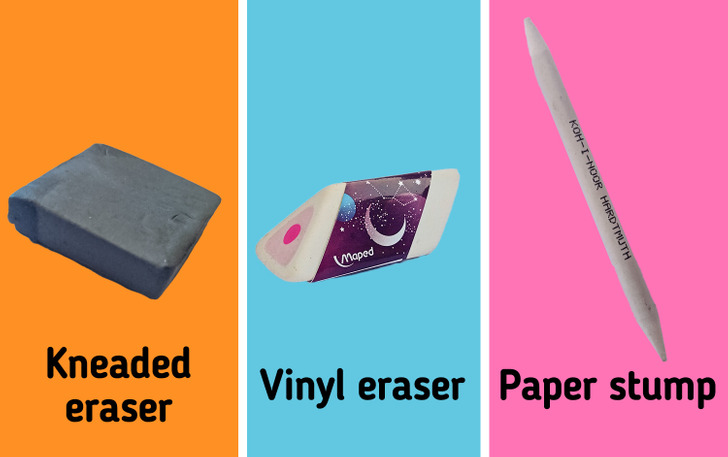
You can use erasers and stumps to remove the messiness on the paper or to blend color. You can choose:
- Kneaded eraser — is very soft and can be made into a shape that fits the area that you want to erase. They can highlight the heavier tones nicely but can also get dirty rather quickly when you are working with charcoal, soft graphite, and carré sticks.
- Vinyl eraser — is made of harder material and, although they can pick up less tint, they also stay cleaner for longer. You can create patterns and lighter lines with the sharp parts of this eraser.
- Paper stump (torchon or tortillon) — is excellent for blending in pigment on the paper’s surface when using charcoal or pastel colors.
Types of paint
Since painters work with different paints, it is useful to know which type is used for what, as the result that each has can vary. Choose between 5 types:
- Acrylic — this paint can dry quickly and is great for blazing, staining, and neat finishes with a brush. They are versatile and have a good quality pigment, making them very durable.
- Oil — mixes well and has a glossy finish. The color itself leaves a rich glaze and is long-lasting. Since it dries slowly, you can spend more time reworking it and making changes.
- Watercolor — a semi-transparent paint that dries quickly with a fluid finish.
- Gouache — another watery paint that leaves a chalk-like texture, but it isn’t translucent, and it takes time to dry.
- Encaustic — has an intense pigment, but the base is made of wax. It doesn’t contain solvents, and it’s perfect to use on an absorbent surface.
Types of paintbrushes
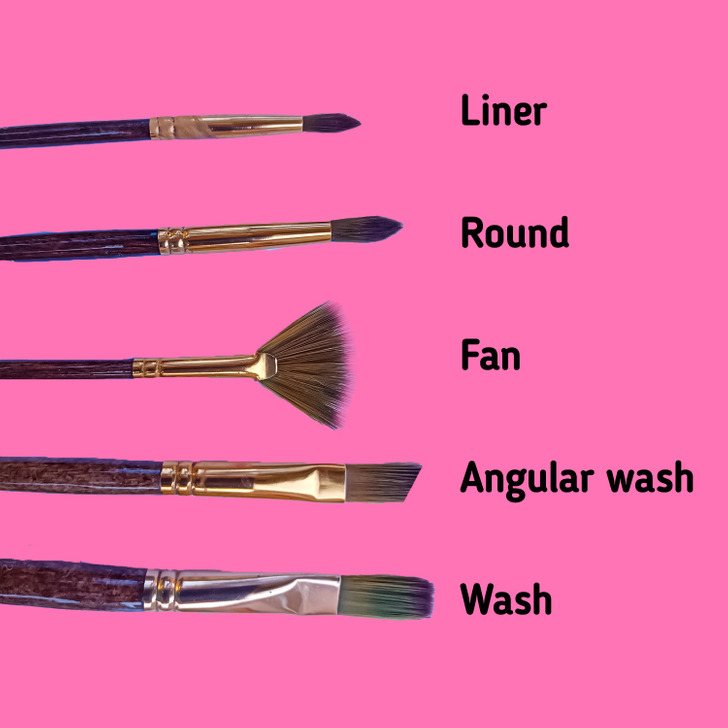
Although there are more types, we singled out 5 popular ones that you can use interchangeably:
- Liner — these brushes have slimmer bristles which makes them perfect for making fine, crisp lines and details.
- Round — it has a wide reach, so you can paint bigger surfaces with a few strokes. The use is very versatile.
- Fan — ideal for creating special effects or interesting textures on canvas.
- Angular Wash — great for painting clean, straight lines.
- Wash — leaves a very smooth finish, can create long lines, and can apply the color swiftly.
Drawing boards and easels
The surface that you paint or draw on should be secured properly so you can create without any problems. It’s best to find a:
- Drawing board — when placing the paper on the board, you should make sure that the surface is smooth, without any bumps, and that it is large enough to fit the paper. Be sure to secure the sheets to the board with spring-loaded board clips.
- Easel — there are various sizes that you can find, but it is best to look for ones that are strong enough for the drawing board and for the force you are applying to the artwork. You can also find portable easels that can be folded and placed in a case.
Other tools
There are also some other tools that can come in handy when it comes to painting and drawing:
- Palette — it’s used as a surface for mixing the colors. Getting a palette that you can hold is more convenient, but you don’t need to spend a lot of money on it since any palette will do the job.
- Fixative — as the name suggests, it helps the colors and pigments in drawings to stay fixed without smudging them. It is a dilution of resin and colorless spirit solvent, which leaves a thin coating on the drawing when applied.
- Palette knife (spatula) — it has a very versatile use, as you can use it to mix colors, to apply them to the canvas, and to create some impressive details and effects on the painting. When buying a palette knife, look for ones that have a sturdy blade, a long and straight edge, and a comfortable grip.
